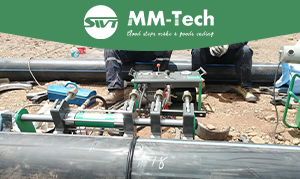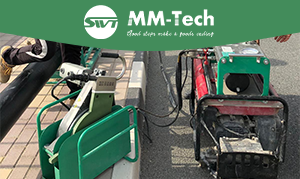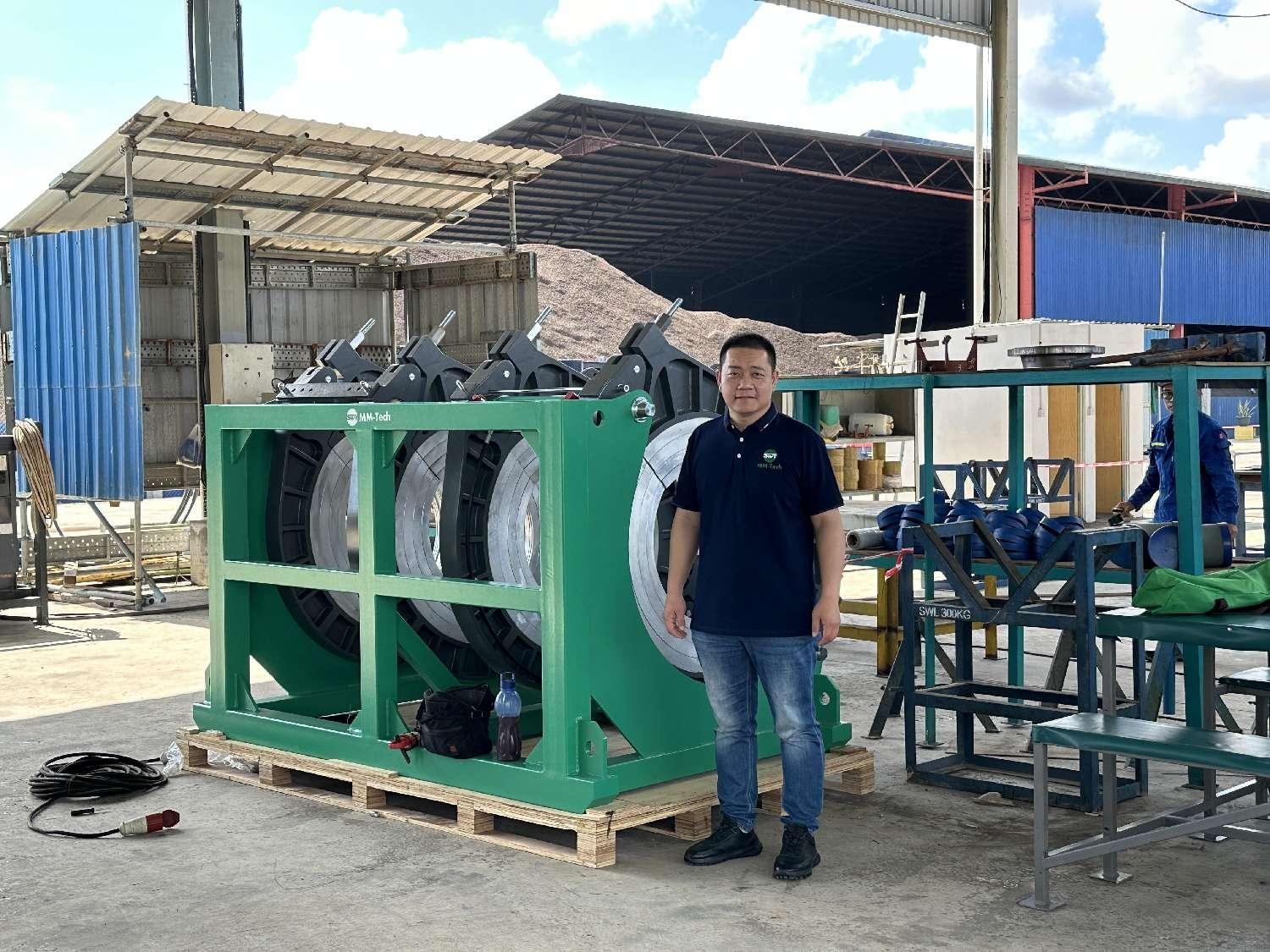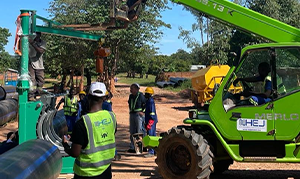Automatic butt fusion machines have redefined the welding process by delivering unmatched precision and efficiency. These machines ensure consistent fusion quality, reduce operational downtime, and optimize productivity. Industries increasingly adopt this technology to meet the demands of large-scale projects requiring durable, high-quality joints. Their ability to minimize human error makes them indispensable in modern welding.
Key Takeaways
Automatic butt fusion machines make welding faster by automating steps. They cut task time from hours to just minutes.
These machines create strong welds by reducing mistakes made by people. They are important for industries needing tough and dependable pipe connections.
Using automatic butt fusion machines saves money over time. They lower labor costs and reduce the need to fix mistakes, making projects more efficient.
Understanding Automatic Butt Fusion Machines
What Are Automatic Butt Fusion Machines?
Automatic butt fusion machines are advanced welding equipment designed to join thermoplastic pipes, such as HDPE, through a controlled heating and cooling process. These machines automate the welding process, ensuring consistent and high-quality fusion joints. They are widely used in industries like oil and gas, water distribution, and construction, where durable and reliable pipe connections are essential. By eliminating manual errors, these machines enhance productivity and reduce labor costs, making them indispensable for modern pipeline projects.
The growing demand for these machines stems from their ability to handle high-pressure applications. For instance, they are critical in the oil and gas sector, where safety and precision are paramount. Their automation features, such as real-time monitoring and data logging, further improve operational efficiency and oversight.
Key Components and How They Function
Automatic butt fusion machines consist of several key components that work together to deliver precise results. These include:
Power Sources: Electric or hydraulic systems provide the energy required for the fusion process.
Control Systems: Options range from manual to fully automatic, allowing flexibility based on project needs.
Clamping Mechanisms: Securely hold the pipes in place during the welding process.
Data Logging and Monitoring: Integrated systems ensure accuracy and traceability by recording critical parameters.
These components streamline the fusion process, ensuring each weld meets industry standards. Specialized machines are also available for applications requiring higher pressure resistance, such as HDPE pipelines in the oil and gas industry.
Key Features | Description |
|---|---|
Power Sources | Electric, hydraulic |
Control Systems | Manual, semi-automatic, automatic |
Clamping Mechanisms | Various types for different applications |
Technological Advancements | Integrated data logging, real-time monitoring for precision and efficiency |
Specialized Machines | Designed for specific applications, e.g., oil & gas industry with higher pressure resistance capabilities. |
The Role of Automation in the Welding Process
Automation plays a transformative role in the welding process by significantly improving efficiency and precision. For example, tasks that previously required 25 minutes can now be completed in just 5 minutes using automated welding machines. This drastic reduction in time not only boosts production rates but also minimizes defects and rework. Automation ensures consistent fusion quality, which is crucial for HDPE pipe installations in large-scale projects.
By integrating features like real-time monitoring and data logging, these machines provide enhanced control over the welding process. This reduces the likelihood of errors and ensures compliance with stringent industry standards. The result is a seamless fusion process that delivers durable and reliable pipe connections, even in demanding environments.
Comparing Traditional Welding Methods to Automatic Butt Fusion
Limitations of Traditional Welding Techniques
Traditional welding methods, such as flash butt welding, often struggle to meet the demands of modern industrial applications. These techniques rely heavily on manual labor, which increases the likelihood of errors and inconsistencies. For instance, achieving a uniform joint in HDPE pipes can be challenging due to variations in operator skill and environmental factors. This inconsistency compromises the quality of the weld and may lead to joint failures over time. Additionally, traditional methods are time-consuming, making them less suitable for large-scale projects requiring high efficiency. The lack of automation also results in higher labor costs and slower production rates, further limiting their practicality in today’s fast-paced industries.
Key Differences Between Manual and Automatic Butt Fusion
Automatic butt fusion machines revolutionize the welding process by addressing the shortcomings of manual techniques. Unlike traditional flash butt welding, these machines automate critical steps, such as heating, alignment, and cooling. This automation ensures consistent fusion quality, even in challenging conditions. For example:
They ensure uniform welds, reducing the risk of joint failures.
Automation improves productivity and lowers labor costs.
Manual methods, on the other hand, require constant supervision and adjustments, which can lead to errors. Automatic machines also integrate advanced features like data logging and real-time monitoring, providing greater control over the welding process. These differences make automatic butt welding indispensable for industries relying on HDPE and polypropylene pipes.
How Automation Improves Precision and Consistency
Automation transforms the welding process by eliminating human error and ensuring precision. Automatic butt fusion machines use controlled parameters to create uniform joints, which is critical for HDPE pipe installations. The machines maintain consistent heat and pressure throughout the process, resulting in durable and reliable welds. This level of precision is unattainable with traditional flash butt welding techniques. Automation also reduces the need for rework, saving time and resources. By streamlining the fusion process, these machines deliver high-quality results that meet stringent industry standards, making them essential for modern pipeline construction.
The Automatic Butt Fusion Process
Step-by-Step Overview of the Fusion Process
The automatic butt fusion process ensures strong and durable connections for HDPE pipes. This process involves several precise steps:
Preparation: Begin by cleaning the pipe ends to remove dirt and contaminants. Proper cleaning ensures a smooth fusion.
Alignment: Secure the pipes in the machine’s clamps. The clamping mechanism aligns the pipes perfectly, preventing misaligned joints.
Facing: Use the integrated facing tool to trim the pipe ends. This step creates smooth and parallel surfaces for optimal fusion.
Heating: Position the heating plate between the pipe ends. The equipment heats the surfaces to the required temperature, ensuring uniform melting.
Fusion: Remove the heating plate and press the pipe ends together. The machine applies consistent pressure, forming a seamless joint.
Cooling: Allow the joint to cool under pressure. This step solidifies the connection, creating leak-free joints.
Each stage of the butt fusion process is automated, reducing errors and ensuring high-quality results.
How Automation Ensures Quality and Efficiency
Automation transforms the welding process by enhancing precision and efficiency. Automated welding machines monitor critical parameters like heat and pressure in real time. This ensures consistent fusion quality, even in demanding environments. For example:
Real-time monitoring of arc voltage and weld speed improves precision.
Robotic systems reduce defects, ensuring uniform joints.
Case studies in industries like automotive and aerospace highlight significant improvements in weld quality due to automation.
By automating the butt welding process, you achieve durable HDPE pipe joints with minimal rework. This efficiency reduces project timelines and operational costs, making automated equipment indispensable for large-scale projects.
Safety Features and Benefits of Automated Systems
Automated welding systems prioritize safety by minimizing human involvement in hazardous tasks. These machines integrate advanced safety features, such as:
Real-time monitoring to track safety performance and identify risks.
Data tracking systems that analyze trends and improve safety practices.
Compliance with industry safety standards, reducing workplace injuries.
Automation also ensures accurate reporting of safety incidents, enabling continuous improvement. By reducing human error, automated equipment enhances both efficiency and worker safety. For HDPE pipe installations, this means safer operations and reliable results.
Advantages of Automatic Butt Fusion Machines
Enhanced Efficiency and Speed
Automatic butt fusion machines significantly improve the efficiency of the welding process. These machines automate critical steps like heating, alignment, and cooling, reducing the time required to complete each weld. For example, tasks that traditionally took hours can now be completed in minutes. This speed makes them ideal for large-scale projects, such as HDPE pipeline installations, where time is a crucial factor.
You benefit from their precision and speed, which align with the demands of modern construction and industrial projects. These machines deliver consistent results with minimal human intervention, ensuring high-quality joints. Their ability to handle polyethylene and polypropylene pipes with ease further enhances their performance. This efficiency not only accelerates project timelines but also reduces labor costs, making them a cost-effective solution for industries requiring durable pipe connections.
Consistent Weld Quality and Reduced Errors
One of the standout advantages of automatic butt fusion machines is their ability to produce consistent weld quality. By automating the process, these machines eliminate human error, which is a common issue in manual welding techniques. The equipment maintains precise control over parameters like heat and pressure, ensuring uniform joints every time.
In industries like aerospace and pipeline construction, where quality standards are stringent, these machines excel. Data logging features allow you to monitor and validate the welding process, ensuring compliance with industry requirements. Automated systems also reduce defects, leading to fewer reworks and higher product durability. This consistency makes them indispensable for HDPE pipe installations and other applications requiring reliable joints.
Long-Term Cost Savings and ROI
Investing in automatic butt fusion machines offers substantial long-term cost savings. While the initial investment may seem high, the reduction in labor costs and rework expenses quickly offsets this. These machines enhance productivity by completing welds faster and with greater accuracy, reducing project timelines.
Their durability ensures they can handle demanding environments, such as HDPE pipeline construction, without frequent maintenance. Government initiatives to upgrade water and energy infrastructure further highlight their value, as they provide reliable and leak-proof joints for critical applications. Over time, the return on investment becomes evident through improved performance, reduced operational costs, and enhanced project efficiency.
Applications Across Industries
Use in HDPE Pipeline Construction and Maintenance
Automatic butt fusion machines play a critical role in HDPE pipeline construction and maintenance. These machines ensure seamless pipe joining, creating durable and leak-proof joints essential for high-pressure systems. You can rely on this technology for projects involving water distribution, gas pipelines, and sewage systems. The precision of HDPE pipe fusion minimizes the risk of joint failures, even in challenging environments.
In maintenance, these machines simplify the repair process by enabling quick and efficient pipe installation. For example, in water treatment plants, they help maintain the integrity of high-density polyethylene pipes, ensuring uninterrupted operations. Their ability to handle large-diameter pipes makes them indispensable for infrastructure upgrades and emergency repairs.
Applications in Manufacturing and Fabrication
In manufacturing and fabrication, automatic butt fusion machines streamline processes requiring reliable pipe connections. Industries use these machines to weld high-density polyethylene pipes for transporting chemicals, gases, and other materials. Their precision ensures consistent joints, reducing downtime caused by leaks or failures.
Electrofusion technology further enhances these applications by providing strong and durable connections. You can see its impact in industries like automotive and aerospace, where high-quality pipe joining methods are crucial. The versatility of HDPE pipe fusion makes it a preferred choice for various manufacturing needs.
Emerging Uses in Specialized Industries
The versatility of automatic butt fusion machines has led to emerging applications in specialized industries. For instance, in agriculture, they are used to weld pipes for irrigation systems, promoting efficient water distribution. In mining, they ensure durable pipe connections for transporting slurry and other fluids under harsh conditions.
The table below highlights the diverse applications of HDPE pipe fusion across industries:
Industry | Application Description |
|---|---|
Mining | Used to weld pipes for transporting water, slurry, and other fluids, ensuring durability in harsh conditions. |
Agriculture | Employed for welding pipes in irrigation systems, promoting efficient water distribution. |
Construction | Essential for creating robust piping systems in residential, commercial, and infrastructure projects. |
Oil & Gas | Utilized for welding HDPE pipes in exploration, production, and distribution, ensuring leak-proof connections. |
Water Treatment | Welds pipes in treatment plants, maintaining the integrity of water distribution systems. |
Manufacturing | Applied in various processes requiring reliable and durable piping systems. |
These applications demonstrate the adaptability of HDPE pipe fusion technology, making it a cornerstone for industries requiring robust and efficient pipe joining methods.
MM-Tech’s Role in Advancing Automatic Butt Fusion Technology
MM-Tech’s High-Quality Welding Solutions
MM-Tech stands out as a leader in providing high-quality welding solutions tailored to meet the demands of modern industries. You can rely on their advanced automatic butt fusion machines to deliver precise and durable joints for HDPE pipes. These machines are designed to handle challenging environments, ensuring consistent performance in critical applications like water distribution and gas pipelines. MM-Tech’s commitment to quality is evident in their 24-month product guarantee, which assures you of reliable and long-lasting equipment. Their comprehensive range of products, including socket fusion and electrofusion machines, supports diverse welding needs, making them a trusted partner for HDPE pipe projects.
Innovations in HDPE Welding and Installation
MM-Tech continuously pushes the boundaries of innovation in HDPE welding and installation. Their machines integrate cutting-edge features like real-time monitoring and data logging, which enhance precision and efficiency. These advancements simplify the installation process, allowing you to achieve seamless and leak-proof joints with minimal effort. MM-Tech also focuses on developing specialized equipment for high-pressure applications, ensuring that their solutions meet the stringent requirements of industries like oil and gas. By prioritizing innovation, MM-Tech helps you stay ahead in an ever-evolving industrial landscape.
Customer-Centric Approach and Global Reach
MM-Tech’s customer-centric approach ensures that your specific needs are always a priority. They provide tailored solutions and exceptional after-sales support, helping you maximize the value of your investment. Their global reach, supported by participation in international exhibitions, allows them to serve clients worldwide. Whether you are working on HDPE pipeline installation or other thermoplastic welding projects, MM-Tech’s expertise and dedication to customer satisfaction make them a reliable choice. Their focus on building long-term relationships ensures that you receive consistent support throughout your projects.
Automatic butt fusion machines are reshaping industrial welding by automating processes and delivering unmatched precision. Their adoption reduces costs, enhances efficiency, and ensures compliance with eco-friendly regulations. Industries increasingly prefer these machines for their high-speed and accurate performance. The market’s growth reflects advancements in technology and the global shift toward automation.
Aspect | Details |
|---|---|
Technological Advancements | Enhancements in welding precision and operational efficiency are driving market growth. |
Adoption of Automation | Increased use of automated machines reduces human error and improves workflow efficiency. |
Environmental Compliance | Machines are being adopted to meet stringent eco-friendly regulations in welding practices. |
The future of industrial welding lies in automation. As global infrastructure expands, these machines will continue to revolutionize welding practices, ensuring durable and reliable solutions for diverse applications.
FAQ
What industries benefit the most from automatic butt fusion machines?
Automatic butt fusion machines are widely used in industries like oil and gas, water distribution, construction, and agriculture. Their precision and efficiency make them indispensable for large-scale projects.
How do automatic butt fusion machines improve safety during welding?
These machines reduce human involvement in hazardous tasks. Integrated safety features, such as real-time monitoring and data logging, ensure compliance with safety standards and minimize workplace risks.
Are automatic butt fusion machines suitable for small-scale projects?
Yes, they are versatile enough for small-scale projects. You can use them for precise pipe joining in residential plumbing, irrigation systems, and other localized applications requiring durable connections.










